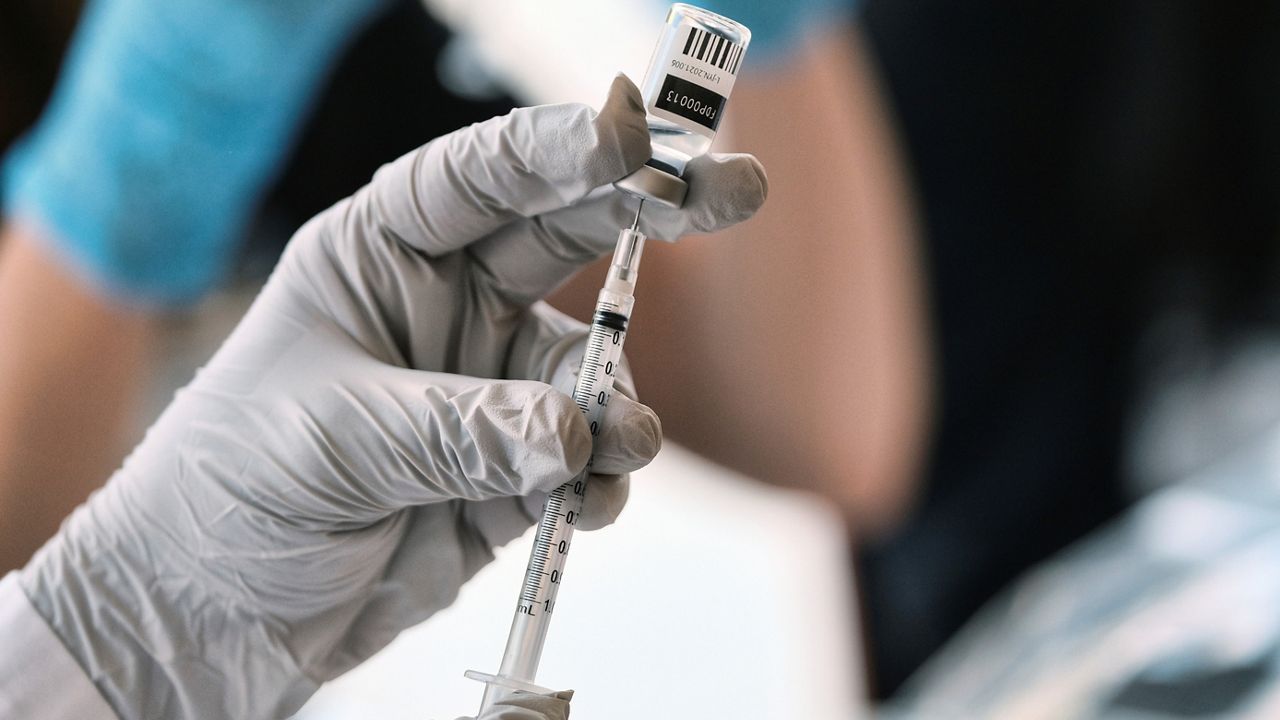New York City health officials declared the five boroughs’ mpox outbreak over on Wednesday, six months after the mayor enacted an mpox-related state of emergency.
The city’s seven-day average for mpox cases stood at zero for most of January, down from a peak of approximately 70 cases per day over the summer, the city’s Department of Health and Mental Hygiene said in a news release.
The department attributed the flattening of the curve to the city’s vaccination efforts, as well as New Yorkers’ response to the outbreak.
What You Need To Know
- New York City health officials declared the five boroughs’ mpox outbreak over on Wednesday, six months after the mayor enacted an mpox-related state of emergency
- The city’s seven-day average for mpox cases stood at zero for most of January, down from a peak of approximately 70 cases per day over the summer, the city’s Department of Health and Mental Hygiene said
- The department attributed the flattening of the curve to the city’s vaccination efforts, as well as New Yorkers’ response to the outbreak
“The end of the mpox outbreak is a moment of pride for us in public health, and represents the best of science and society coming together for quick action,” the city’s health commissioner, Dr. Ashwin Vasan, said in a statement.
More than 100,000 New Yorkers were vaccinated against mpox in the months following the opening of the city’s first mpox vaccine clinic in June, Vasan said.
That number far exceeded the 3,821 mpox cases the health department recorded between May 19 and Dec. 31 of last year.
New York City ultimately administered more than 155,000 doses of the two-dose vaccine in 2022 — more than any U.S. state except California, which administered more than 289,000 doses, the health department said.
Health officials announced the first case of presumed mpox in the city at the end of May, a week after the first U.S. case of mpox was reported in Massachusetts.
Today we declared an end to the mpox outbreak in NYC. After a massive vaccination campaign, extensive community outreach and leadership from advocates, NYC has stemmed the tide of the outbreak. Over 100,000 people have been vaccinated in NYC to date: https://t.co/uGu3N2Bdno pic.twitter.com/3mDJwFLgob
— nychealthy (@nycHealthy) February 1, 2023
At the time, officials were still calling the disease “monkeypox.” The Centers for Disease Control and Prevention officially adopted its new name, “mpox,” in November, in light of a World Health Organization recommendation that said the original term was fueling “racist and stigmatizing language” online and elsewhere.
In its early stages, the five boroughs’ vaccine rollout was marked by technical difficulties and long lines, as well as a nationwide lack of supply.
Mayor Eric Adams declared an mpox “state of emergency” on Aug. 1, after 1,472 New Yorkers had tested positive for the disease.
By the end of that month, however, the city had administered more than 68,000 vaccine doses, and Vasan said the five boroughs were “seeing a pretty steep decline in our epidemic curve.”
Health department data shows the curve falling steadily in the months that followed, with the seven-day average case count nearing zero by November.
“Our city vaccinated more than 100,000 people and was the first in the nation to pilot effective strategies, driving both public awareness and official response strategies,” Vasan said. “New York City took bold action early and throughout this outbreak, and together helped turn the tide and mobilize the nation.”



